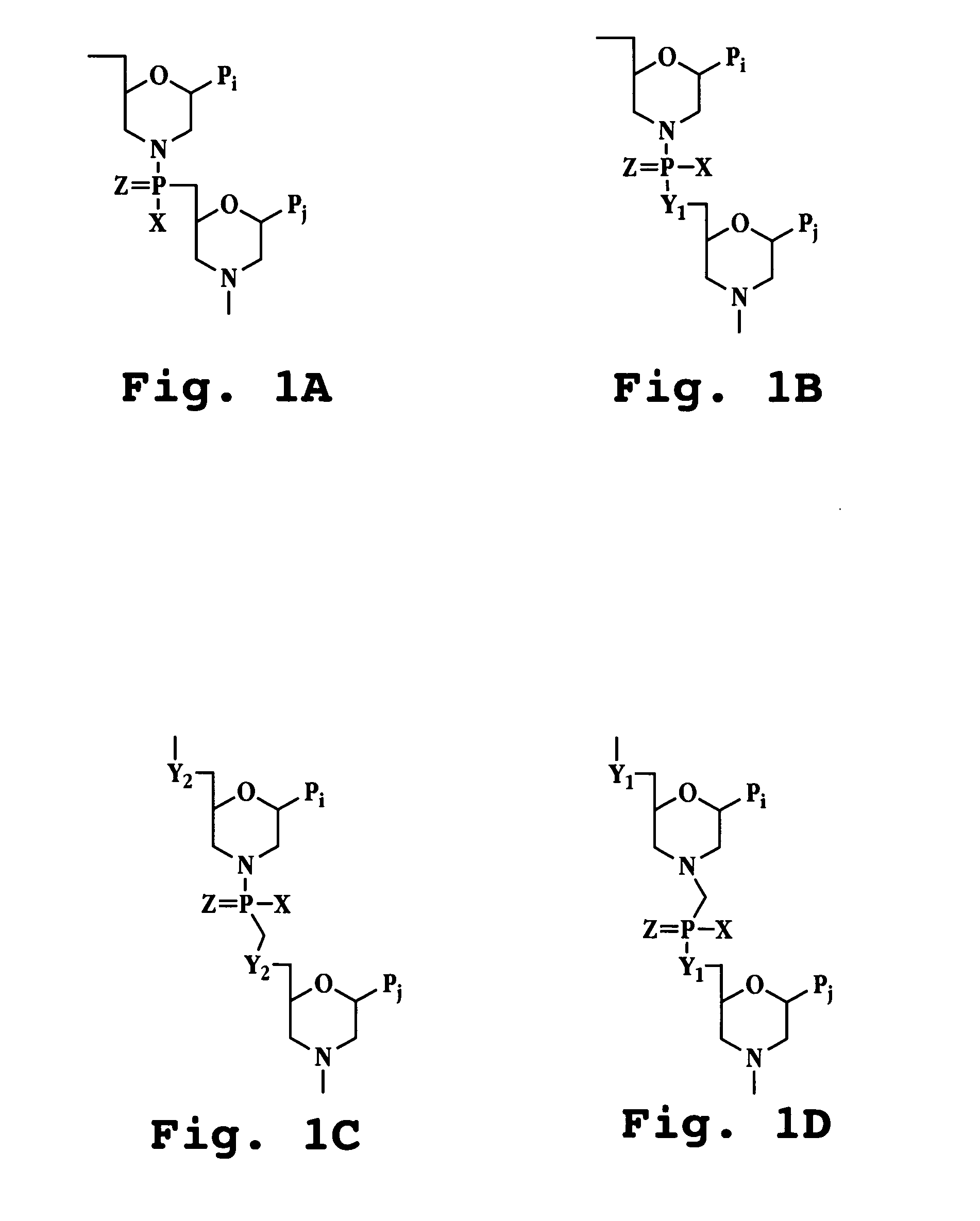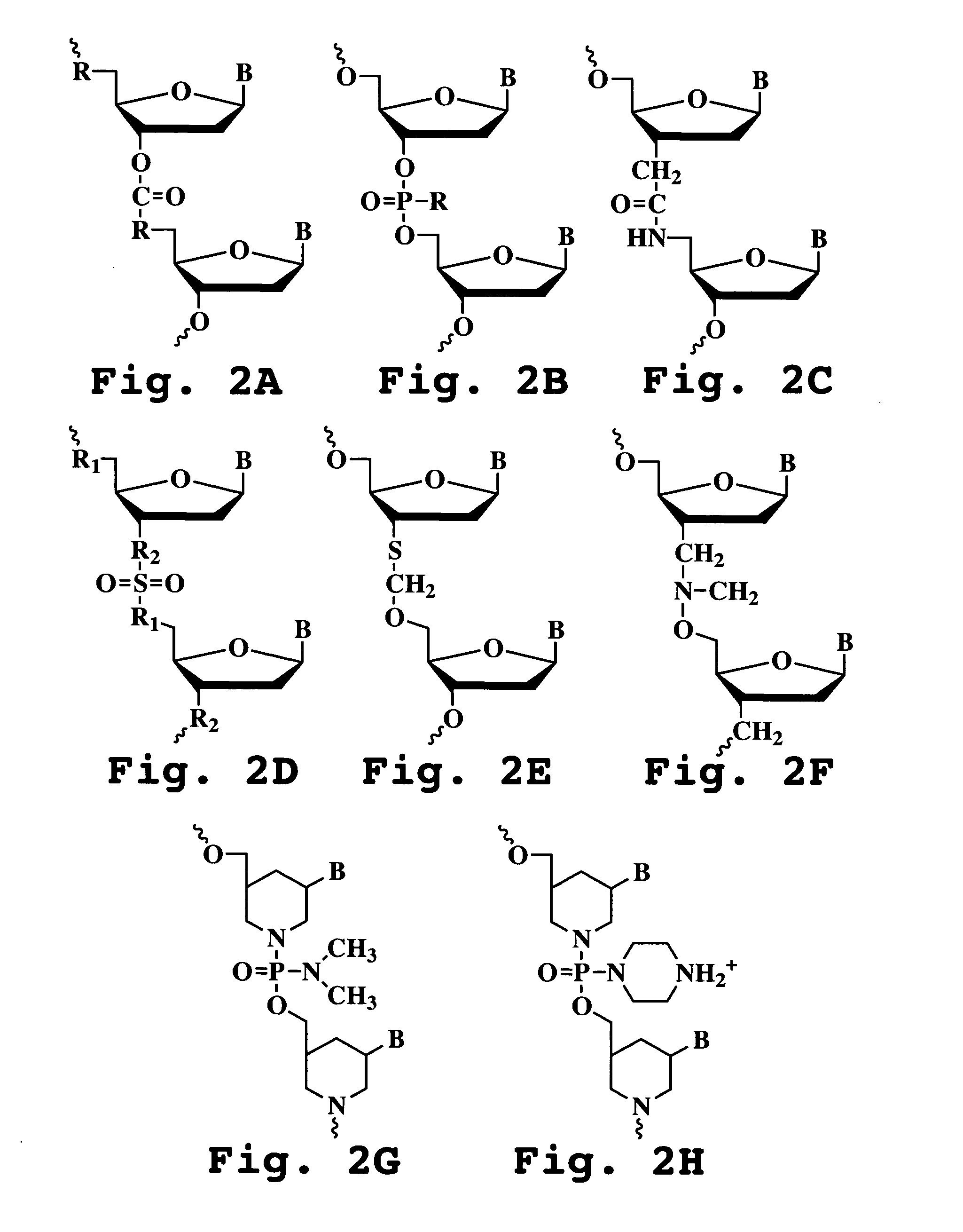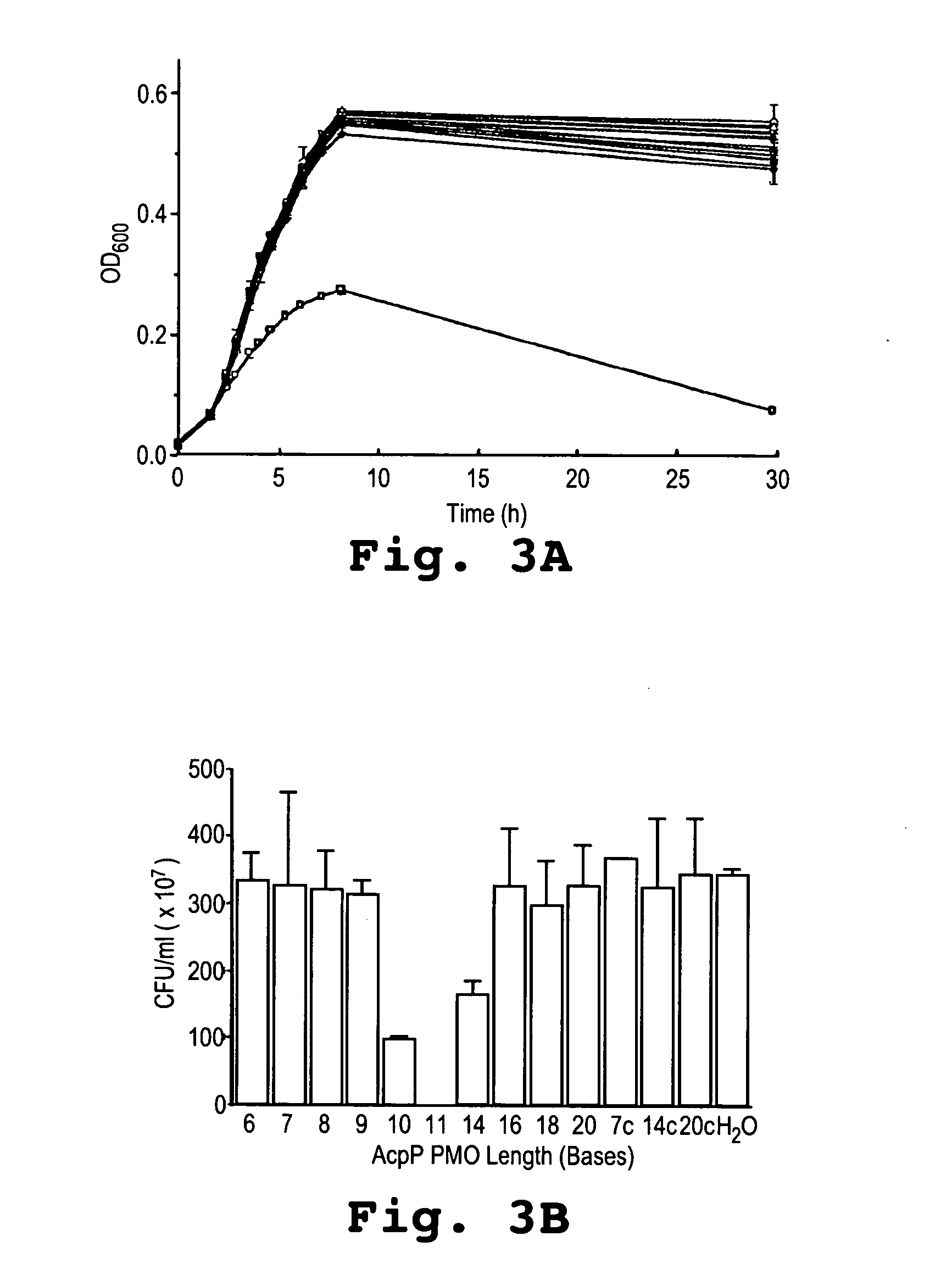Antisense antibacterial method and compound
a technology of antibacterial and antibacterial compound, which is applied in the direction of antibacterial agents, peptide/protein ingredients, biocide, etc., can solve the problems of low antibacterial activity, low antibacterial activity, and low antibacterial activity,
- Summary
- Abstract
- Description
- Claims
- Application Information
AI Technical Summary
Benefits of technology
Problems solved by technology
Method used
Image
Examples
example 1
Acyl Carrier Protein as an Endogenous Bacterial Gene Target
[0201] The effect of PMO was tested on an endogenous bacterial gene that encodes acyl carrier protein, acpP, which is essential for viability (Zhang and Cronan 1996) and has been used previously to inhibit bacterial growth (Good, Awasthi et al. 2001; Geller, Deere et al. 2003). PMO from 6 to 20 bases in length and complementary to the region around the start codon in mRNA for acpP (Table 3, SEQ ID NOS:62-71, respectively) were added to growing cultures of AS19 and growth at 37° C. was monitored by optical density and viable cell counts. Growth curves were normal for all cultures except for that with the 11 base PMO, which caused significant inhibition (FIG. 3A). Slight and reproducible, but statistically insignificant inhibitions of OD occurred in cultures with the 10 and 14 base PMO. Viable cells were significantly reduced in 8 hour cultures that contained PMO of 10, 11 or 14 bases (FIG. 3B). No reduction in CFU was appar...
example 2
In Vivo Antisense Antibacterial Activity
[0203] Groups of 12 mice in each of three treatment groups were injected IP with E. coli strain AS19, which has a genetic defect that makes it abnormally permeable to high MW solutes. Immediately following infection, each mouse was injected IP with 300 μg of an 11-base PMO complementary to acpP (PMO 169; SEQ ID NO:66), an 11 -base nonsense sequence control PMO (PMO 170; SEQ ID NO:75), or PBS. Peritoneal ravages were collected at 2, 7, 13, and 23 hours post-infection, and plated for bacteria. The results show that at all times analyzed, the acpP PMO-treated mice had significantly (P<0.05) lower CFU than the mice treated with either nonsense PMO or PBS (FIG. 5). The differences between the acpP PMO-treated group and the nonsense PMO control ranges from 39-fold at 2 hours to 600-fold at 23 hours.
[0204] The same PMOs were again tested, except with E. coli strain SM105, which has a normal outer membrane. AcpP PMO reduced CFU by 84% compared to n...
example 3
Enhanced Anti-Bacterial Properties of Peptide-Conjugated PMO
[0207] PMO conjugated at the 5′ terminus with a series of three different peptides were evaluated for their antibacterial properties. The 11 mer PMO that targets the E. coli acpP gene (SEQ ID NO:66) was used as the antisense oligomer moiety and conjugated to either the RFF, RTR or RAhx peptides (SEQ ID NOS:79-80 and SEQ ID NO:87, respectively) to produce peptide-conjugated PMOs (P-PMOs) RFF-AcpP11, RTR-AcpP11 and RAhx-AcpP11 (SEQ ID NOS:88-89 and SEQ ID NO:93, respectively).
[0208] Four laboratory strains of E. coli (W3110, MIC2067, DH5α, SM105) were treated with 20 μM RFF-AcpP11 PPMO (SEQ ID NO:88), 20 μM free RFF peptide (SEQ ID NO:79) with unconjugated AcpP11 PMO (SEQ ID NO:66), or received no treatment (control) in LB broth, then were incubated at 37° C. for 24 hours. Every hour for 8 hours then at 24 hours the OD600 values (turbidity measurement) of the cultures were measured using a spectrophotometer. After 8 hours,...
PUM
| Property | Measurement | Unit |
|---|---|---|
| optical density | aaaaa | aaaaa |
| Tm | aaaaa | aaaaa |
| Tm | aaaaa | aaaaa |
Abstract
Description
Claims
Application Information
 Login to View More
Login to View More - R&D
- Intellectual Property
- Life Sciences
- Materials
- Tech Scout
- Unparalleled Data Quality
- Higher Quality Content
- 60% Fewer Hallucinations
Browse by: Latest US Patents, China's latest patents, Technical Efficacy Thesaurus, Application Domain, Technology Topic, Popular Technical Reports.
© 2025 PatSnap. All rights reserved.Legal|Privacy policy|Modern Slavery Act Transparency Statement|Sitemap|About US| Contact US: help@patsnap.com



